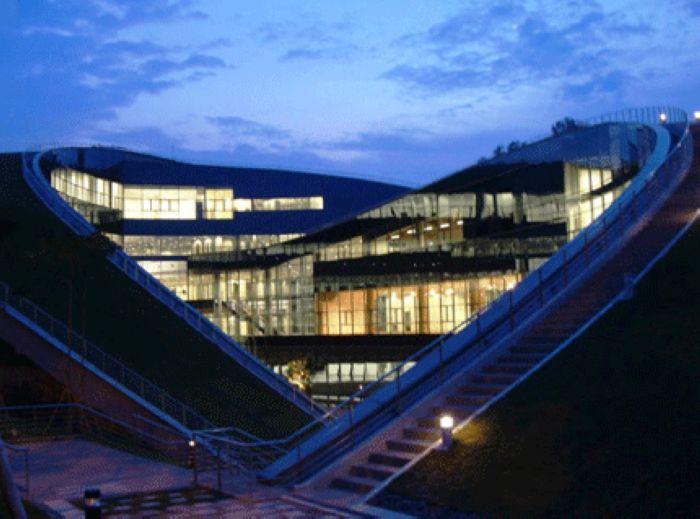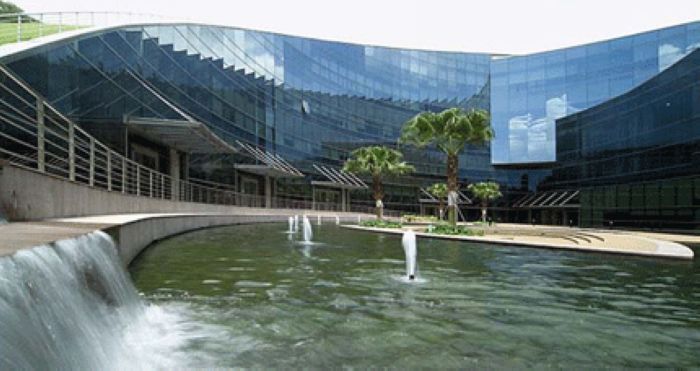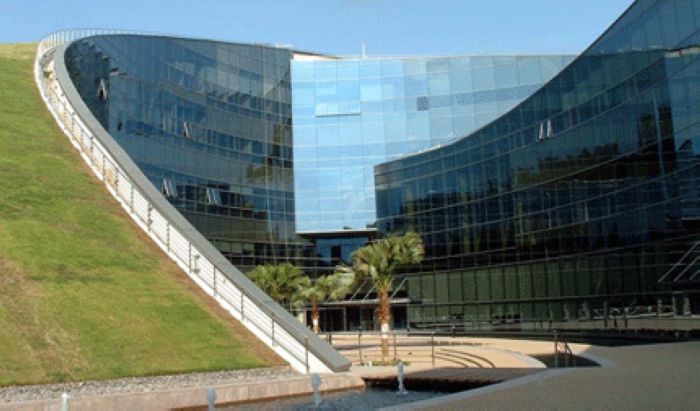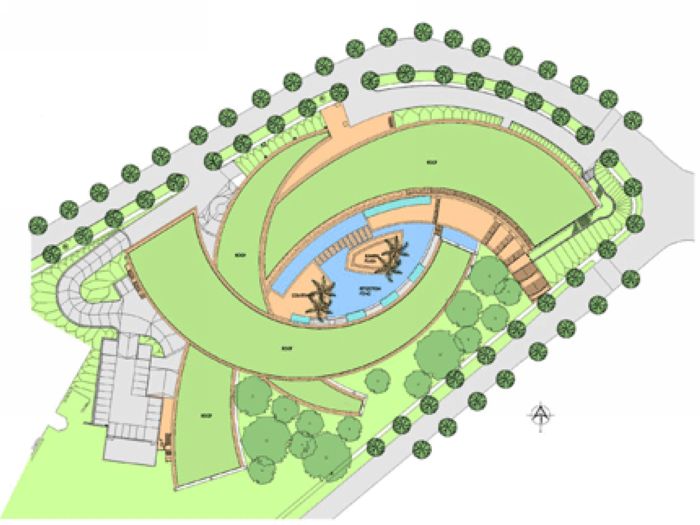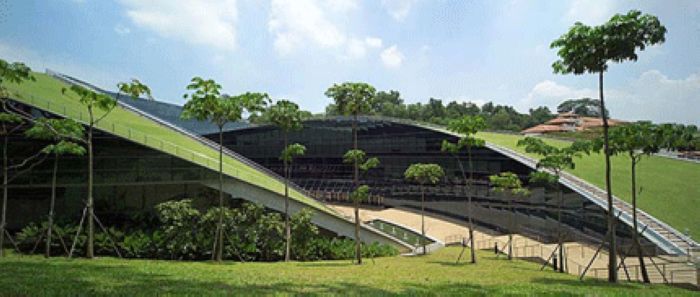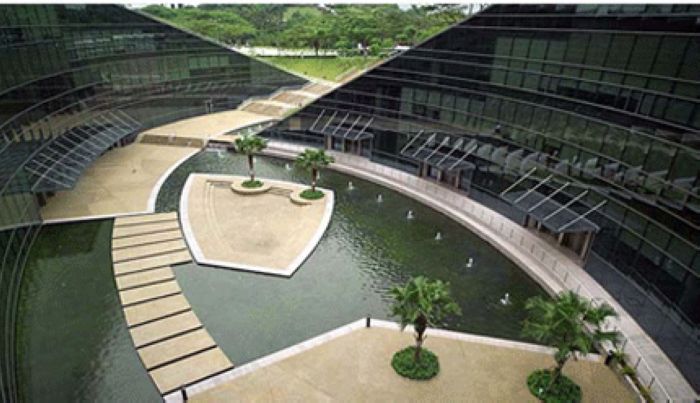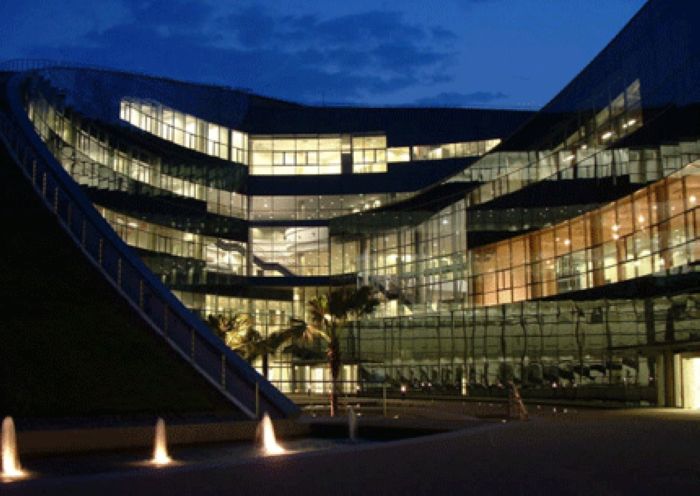Client
Nanyang Technological University
Gross Floor Area
18,000 sqm
Designers
CPG Consultants Pte Ltd
Project Cost
S$35.39 million
Completion Date
2006
Services
Architectural Design & Consultancy
Mechanical & Electrical Engineering
Civil & Structural Engineering
Quantity SurveyingAccording to the master plan of the 200-hectare university campus, the site where the Nanyang Technological University School of Art, Design and Media (NTU-ADM) sits is a wooded valley which was supposed to be left as a green lung. In order to keep to the original intention of the master plan, the architect carved a habitat from the constraints of the valley and allowed the landscape to play a critical role in moulding the building. NTU-ADM is the creation of a “non-building”, allowing the original greenery of the site to creep and colonise.
The key feature of the building is its transparency and connectivity – both within the interior spaces and the external environment. There is a great sense of continuity in the interior, from the entrance to the main foyer to various spaces inside and right into the turfed roofs. Internal glass walls enhance this visual connectivity and flow, allowing one to see beyond rooms thus promoting interaction and creative exchange.
The building design challenges the traditional linear system of education with a clear teacher-student arrangement. Here, different types of spaces are created – from the formal auditorium seating to the more informal studios, lobbies, passageways and breakout lounges. There are also cosy outdoor corners, a sunken plaza formed by the embracing arms of the building and the turfed roofs.
The glass facade of the building also allows full exterior views, again providing visual connectivity with the surrounding lush landscape. Lights are incorporated onto the roof to allow students to meet in the evening. At night, the building glows like a lantern allowing activities of the school to be observed from the outside. The changing character of the facade lends dynamism, life and interest to the building as day transforms into night.
This is a 5-storey School of Art, Design & Media at Nanyang Technological University campus, Singapore. This stunning piece of award-winning architecture is situated in a wooded valley. Before you read on, answer this : is this a landscape or a building?
The embracing arms of this unique building have a most spectacular verdant turfed roof which blends with ground contour as if emerges from it. It has glass curtain wall and raw concrete minus the painting.
Apart from its visual impact, the turfed roofscape helps to lower the roof temperature and surrounding areas. It works as a functional space, as a scenic outdoor community space via easily accessible sidesteps along the roof edge.
Lighting plays an important aspect to the building. The full glass curtain wall allows generous doses of daylight into the studios and galleries while cutting off the tropical heat. At night, the building glows like a lantern.
The exterior glass facade of the building allows full views to the outside, again providing visual connectivity with the surrounding lush landscape.
Three blocks of the school building are organically interwoven to enclose a sunken courtyard and a unique interconnectivity and flow.
The site is a wooded valley which was supposed to be left as a green lung in the master plan of the 200-hectare Nanyang Technological University campus. The designer-planners, however, carved a habitat from the constraints of the valley. And instead of imposing a building onto the landscape, they let the landscape play a critical role in moulding the building. It allows the original greenery of the site to creep and colonise the building.
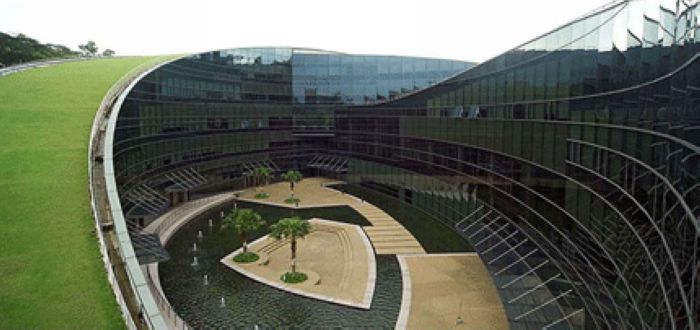
The building design challenges the traditional linear system of education with a clear teacher-student arrangement. Here, given the sloping nature of the architectural form, many of the teaching spaces come in different shapes and volumes which could be easily adapted to different needs. For example corridors and cozy corners double up as informal exhibition areas. The architectural form beautifully complements and creates an ambience and environment conducive for exploration and exchange of ideas for the arts and design students.
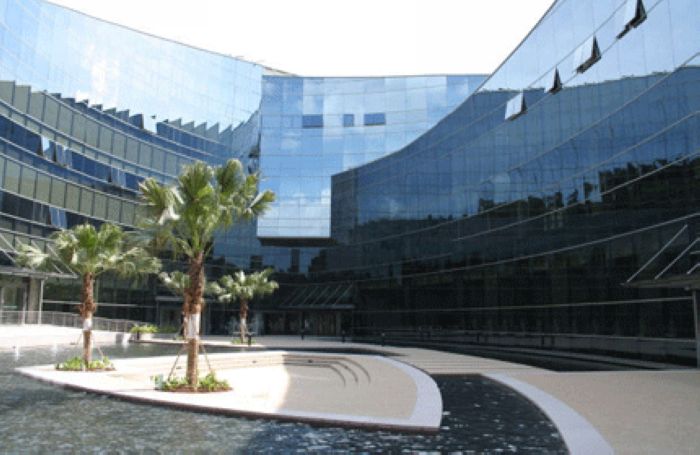
Apart from glass wall the building is also cladded in natural forms, like the off-form concrete walls and columns, cement-sand screeded floors and timber railings. To reinforce the natural theme, loud colours and elaborate decoration are avoided. This also means students have been provided with the perfect platform to express themselves by adorning the surfaces of the building with their works thus allowing the building to evolve its own identity.
資料來源:
http://www.cpgcorp.com.sg/portfolio/viewdetails.asp?Lang=EN&PCID=5&PDID=338
http://designflute.wordpress.com/2008/01/11/green-turfed-roofscape/

